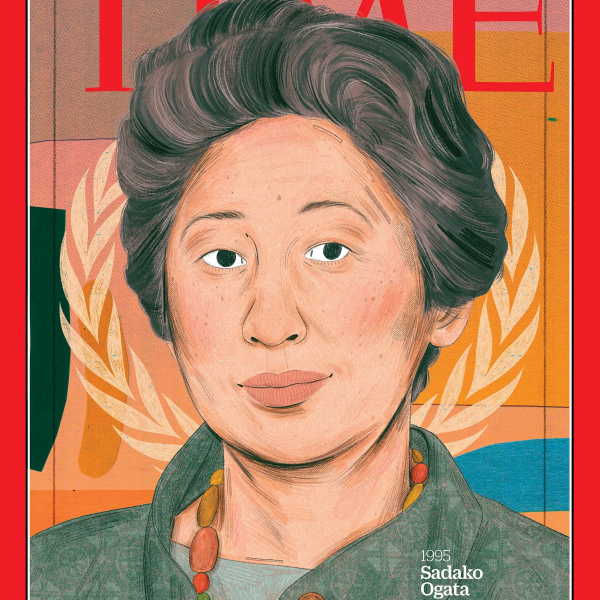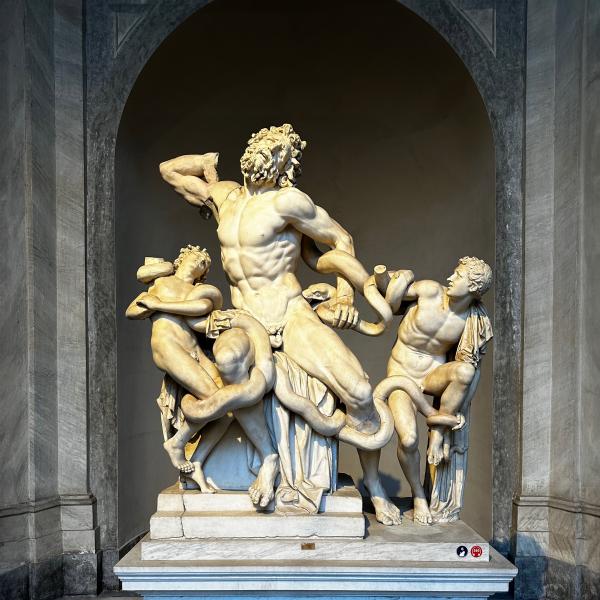Spanish literature scholar Stephanie Kirk introduces us to the cloistered women of Jesús María, featured in Sigüenza y Góngora’s Parayso Occidental [Western Paradise, 1684]. When Kirk’s translation is complete, tales of illegitimate royals and indigenous “Vestal Virgins” will enthrall scholars of many disciplines.
In his 1684 publication Parayso Occidental [Western Paradise], Sigüenza y Góngora details the 100-year-history of Jesús María, a convent in Mexico City. One section recounts the story of Marina de la Cruz, a widow who enters the convent with her beautiful daughter, whom she dotes on. Sigüenza writes that God punishes Marina for her less-than-full devotion, striking her daughter with a disfiguring illness that eventually kills her. Freed from all worldly distractions, Marina dedicates herself to a life of sanctity and becomes an exemplar for the other women. Stories such as this one — with their details about life in the Spanish New World, expectations of and options for women, and the Catholic Church’s role in society — convinced Stephanie Kirk, associate professor of Spanish, that the publication deserved a wider audience. Below, Kirk, a Faculty Fellow in the Center for the Humanities, previews the work she has spent the last year translating.
You’re working on a translation of a work called Western Paradise (1684). What’s important to know about the author?
Carlos de Sigüenza y Góngora (1645–1700) was a fascinating person. Together with the cloistered nun and famous writer Sor Juana Inés de la Cruz, he was the leading intellectual of his day. He was a polymath and mastered many topics, including engineering, indigenous cultures, cosmography, mathematics, history and astronomy. He corresponded with leading scholars in Europe and possessed a huge library of books and indigenous codices. A product of his age, he saw no contradiction between science and religion and was deeply devout. He had been expelled from the Jesuits as a novice for unbecoming behavior — the rumors were he would escape from the monastery at night — and spent the rest of his life desperately trying to gain readmission. Seemingly, he was granted his wish on his deathbed and left his library to the Society of Jesus. He left his body, however, to science at time when cadavers for autopsy were in short supply and when suspicions persisted about the orthodoxy of such anatomical explorations.
What is the book about?
Western Paradise is about the foundation (1580) and the first 100 years of the convent of Jesús María, intended as a refuge for the destitute daughters and granddaughters of the conquistadors. The convent itself paid for the publication of the chronicle as an act of commemoration, and we learn about the difficulties the wealthy male benefactors faced in realizing their desire to found Mexico’s third convent. We also learn in detail about two of the convent’s most famous nuns — renowned in different ways for their piety. In lesser detail we also learn about some other figures whom Sigüenza y Góngora celebrates for their religiosity, including, most unusually, indigenous servant women and a black female slave who all worked in the convent serving the nuns. And the text is peppered with fascinating anecdotes about other women, including Doña Michaela de los Ángeles, suspected to be the niece of one of the archbishops of Mexico City, but in reality the illegitimate daughter of Phillip II of Spain. Supposedly, the king founded the convent for her. Sent to Mexico at the age of two, she died young in Jesús María after having gone insane at the age of 13. But the text is so much more than the sum of its parts, and the stories Sigüenza y Góngora tells of the foundation of the convent and its inhabitants give us a fascinating window onto life in the great metropolis of Mexico City in the 17th century, of Spanish imperial practices, the culture of the creoles born there and who would eventually demand independence from Spain, and the many marginalized figures who lived and worked there and left their mark on colonial Mexican society.
Western Paradise is also about the desire of the colonial creole (those born in Mexico of exclusively Spanish descent) to differentiate themselves and their homeland from Spain. This is not an independence movement — they still conceived of themselves as loyal imperial subjects — but a desire to escape from the inferior position they occupied in intellectual, cultural, economic and political terms relative to those born in Spain. One of the strategies Sigüenza y Góngora employed was to align the creole with the indigenous past and to posit the glories of the pre-Hispanic past as part of the creole’s genealogy. In the book’s very first chapter, he draws a connection between the nuns of New Spain and what he describes as the Aztec Vestal Virgins who attended the great temples of the Aztec empire. There is, however, a great ambiguity in Sigüenza y Góngora’s reappropriation of the indigenous past for the glorification of the creole present. While he invokes the splendor and magnificence of the Aztec temples, he also characterizes them as theaters of abominable impiety, and any contemporaneous indigenous women appear only as servants in his narrative.
Tell us about translating 17th-century Spanish into modern English.
The language is a huge challenge! New Spanish baroque prose is insanely convoluted and labyrinthine and long-winded. Sigüenza y Góngora aimed to display his erudition. In its opaqueness and wordiness, it reminds me sometimes of academic writing at its absolute worst. So, my greatest challenge is to first decode and decipher — at times I find identifying the subject of certain verbs quite difficult as they can appear at several lines’ remove from each other — and then to render it into readable English prose without losing the atmosphere of the original.
Why is this book important to your field? And what other fields will benefit from this first-ever English translation?
This book primarily tells of women’s lives at a time when men’s stories held more currency and when men very much decided women’s fates. Sigüenza y Góngora claims he is writing a history of women for women, but scholars have cautioned readers not to take this at face value because he is very much using women’s stories to further his own intellectual ends as an educated creole. We can access the information on women’s lives, but we must be attuned to the gender politics at play. So, the book is also very much an invaluable resource on gender relations at the time and on how men and women negotiated their positions therein. It also details the central role of religion in New Spanish society. Written at a time when a huge percentage of women living in convents in various capacities, Western Paradise gives us an unprecedented view of their experiences.
The translation offers an invaluable resource to those studying early America who like to look beyond the Anglo world. Women studies scholars and students will also find the detail regarding women’s lives and gender roles in a global setting of interest. Also, the detailed look at the Catholic Church at the height of Spain’s imperial power will appeal to those teaching and studying religion. Finally, my translation of Western Paradise offers access to readers for the first time of one of the great classics in the history of Mexican narrative.




